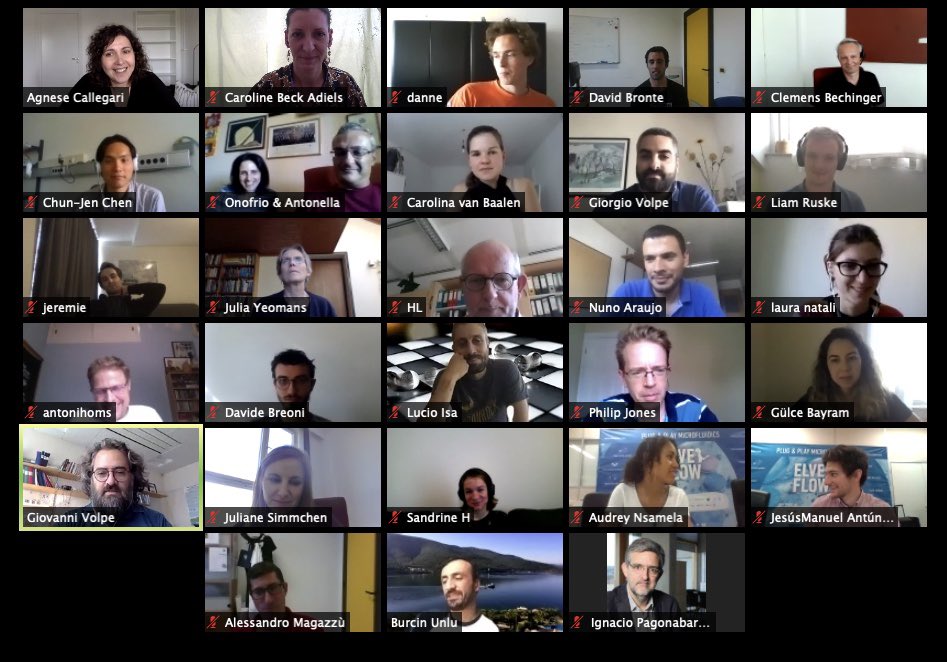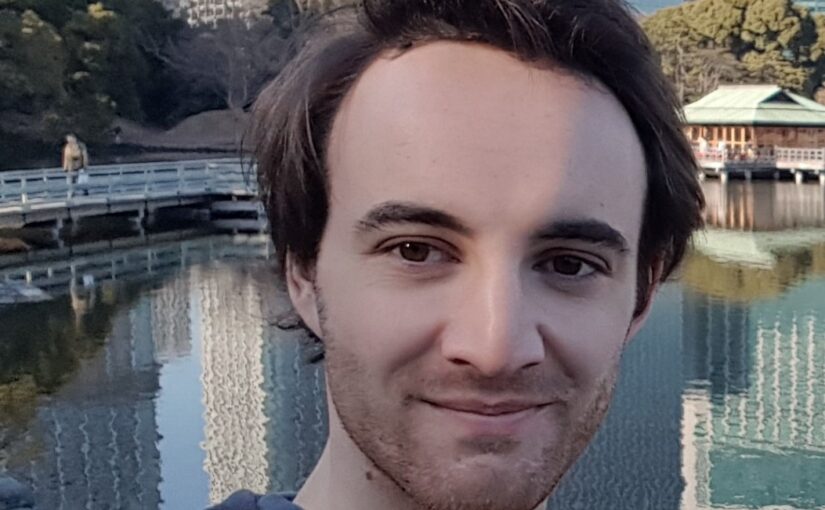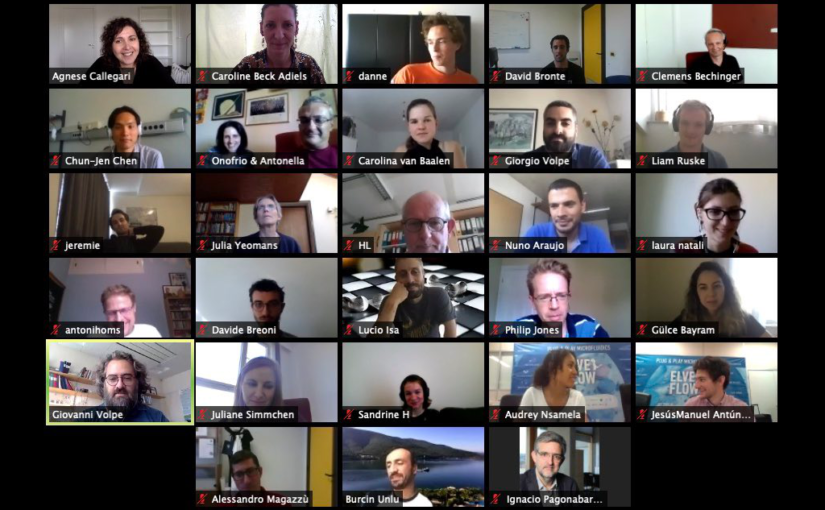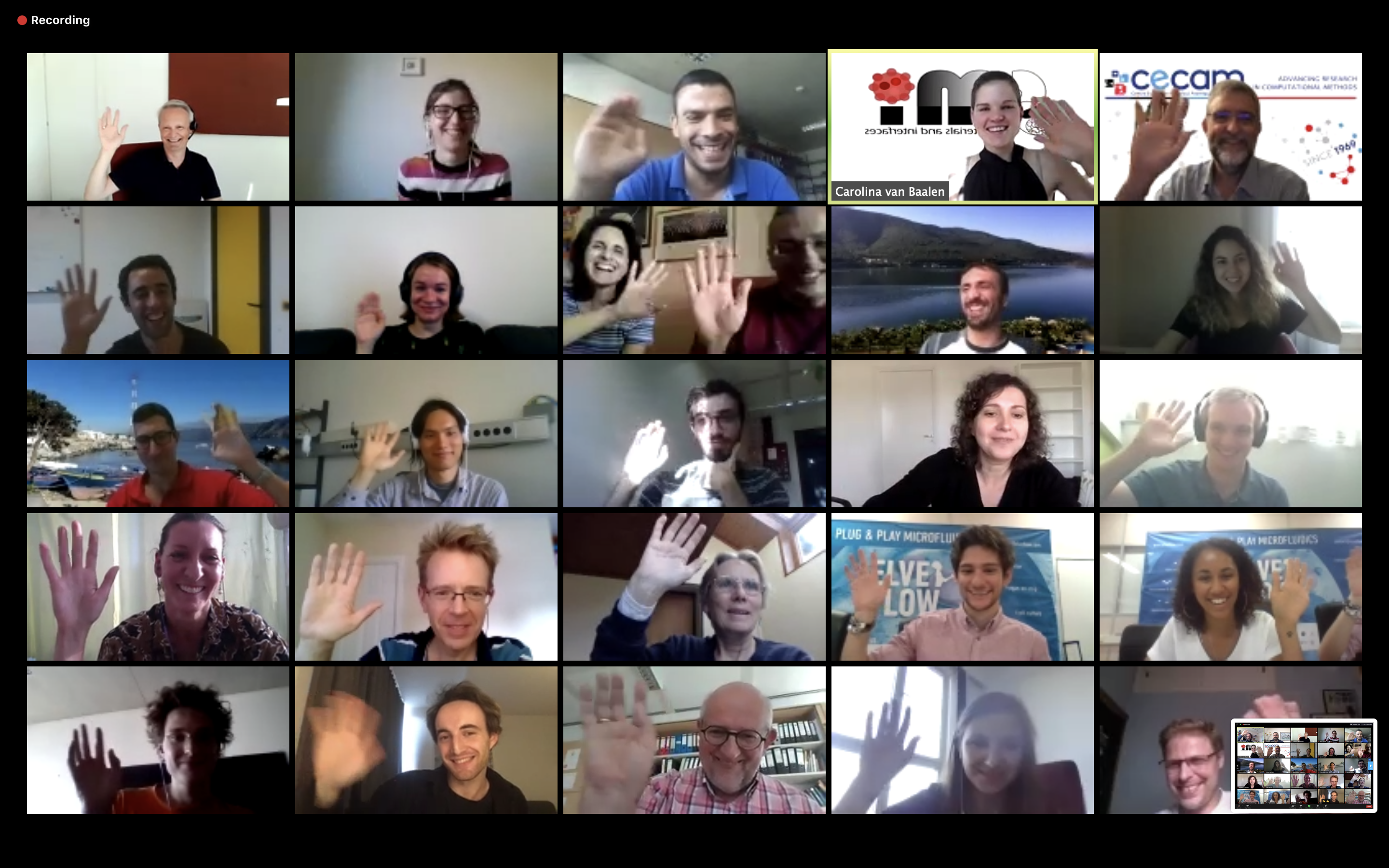
 New ActiveMatter logos: color and BW version. (Image by ActiveMatter ESRs)
New ActiveMatter logos: color and BW version. (Image by ActiveMatter ESRs)
Tag: Jérémie Marc Bertrand
Round Table Discussion on: Collective Behavior
The fourth roundtable was an opportunity for all students to discuss the topic “Collective Behavior” on Zoom with a panel of guests: Clemens Bechinger from the University of Konstanz, Ivo Buttinoni from Heinrich Heine University in Dusseldorf and Caroline Beck Adiels from Gothenburg University. The event was organized by Daniela Pérez, Danne van Roon, Davide Breoni, Jérémie Bertrand, Laura Natali and Liam Ruske on March 24th.
Although the guests had different background they seemed to agree on the fact that complex behavior can emerge from an ensemble of entities that obey a small number of simple rules. Indeed, minimalistic models such as the Vicsek model account for phase transition from a disordered motion to large scale motion and more; phenomena that appear to be universal.
A question on the role of intelligence and communication in collective behavior started the discussion. Although some animals or colony of bacteria may seem intelligent (e.g. escaping from a predator in a clever way or making long-lasting symbiotic microfilms), we must bear in mind that collective behavior is… collective, and rarely arises from decisions made individually. It may be said that in the animal kingdom, the need for survival requires a need to adapt and therefore to be intelligent, but this need for intelligence can be outsourced and solved at the level of the group rather than hardwired in the physical brain of each animal (or human).
It is also conceivable that one of the entities acts as a leader and ignites a collective behavior. Giovanni Volpe made an interesting remark, stating that a leader is the one who defines the objective function to be optimized by the group. The idea of leadership in collective behavior of microscopic systems remain largely unexplored by physicists.
After one hour of fruitful discussion and back and forth between the students and the guests, the session was finished and we resumed our activities with a better understanding of collective behavior. We thank the panelists for their inputs and attendance!
Round Table Discussion on: Living Active Matter
As part of the experimental training, a second round-table discussion took place yesterday, 18 March 2021. The event centered around a discussion on the topic of « Living Active Matter » and featured four invited guests, all physicists, who have studied different topics and length scales relevant to living systems. The invited panel was composed of Aidan Brown from University of Edinburgh, Salima Rafai who works at CNRS in Grenoble, Eric Clément from PMMH-ESPCI in Paris and Benjamin Friedrich from TU Dresden, and was conducted by six of the students attending the training: Audrey Nsamela, David Bronte, Jérémie Bertrand, Ojus Satish Bagal, Daniela Peréz Guerrero and Dana Hassan, who first introduced each guest and then asked selected questions. From molecules and cells to tissues, organisms and populations, each guest had a particular expertise which made for a wide-ranging and interesting discussion.
A question on the evolutionary role of self-propulsion was met with an answer from Dr Brown, who, as obvious as it may seem, pointed out that organisms become “active” when whatever they need to survive is not in their immediate surroundings and must be found elsewhere. When Dr Rafai suggested that the micro-swimmers she studied were not converting their energy to motion optimally, Dr Brown pointed out that biological systems are optimized only in the sense that they are versatile and can adapt to a large number of situations or physical parameters, which is not something that can be captured by a single experiment. This goes to show that, when given the same set of facts, physicists and biologists will often interpret their observations differently, and that discussions between the two disciplines can be fruitful.
Dr Friedrich pointed out that the inherent complexity of biology was such that you could sometimes make progress by just looking and writing down how the processes unfold. He went on to explain that one of the bigger challenges biologists face is that many of these processes occurr below the resolution limit of the microscopes (the “diffraction barrier”) and can therefore not be observed by regular optical microscopes. Several panelists are excited about the coming of newly-designed, ground-breaking microscopes; devices that would use entangled photons to break the diffraction barrier. These new technologies could help not only the field of biology, but also encourage physicists and chemists to collaborate and create models of previously undiscovered mechanisms at the smaller scales. Deep learning is another tool that was alluded to by Dr Rafai as something to look forward to for image reconstruction.
Overall, we found the discussion very productive and we would like to thank once more the panelists for their insights and willingness to participate!
Jérémie Bertrand presents his PhD project at the ActiveMatter online meeting, 10 September 2020
On the 10th of September members of the network met online, for the first time with full attendance from both PIs and ESRs. As one of newest member of the group, Jérémie introduced himself, his background and talked briefly about his master thesis project.
If you are curious about Jérémie’s past projects, or want to hear some details on the outline of his PhD project at EPFL, watch this video!
ActiveMatter PIs+ESRs Online Meeting on 10 September 2020
The ActiveMatter PI+ESRs meeting took place on 10 September 2020. Because of the current travel restrictions and regulations imposed to hinder the spread of the CoViD-19 epidemics, the meeting was held online.
The aim of the meeting was to give an update to all the members on the progress of the ActiveMatter network.
Currently 12 of the 15 Early Stage Researchers (ESRs) have already been recruited and could started their project. During the meeting the ESRs had the opportunity to introduce themselves to the rest of the network and to present their research project.
The presentations of the ESRs have been uploaded on the Youtube channel of the ActiveMatter network and are available online.
Links to the individual presentations:
Liam Ruske, UOXF
Carolina van Baalen, ETH
Audrey Nsamela, ELVESYS
Danne van Roon, FC.ID
Chun-Jen Chen, UKONS
Sandrine Heijnen, UCL
Jesús Manuel Antúnez Dominguez, ELVESYS
David Bronte Ciriza, CNR
Laura Natali, UGOT
Ayten Gülce Bayram, UBIL
Davide Breoni, UDUS
Jérémie Mar Bertrand, EPFL
Pictures
 (Screenshot by Caroline Beck Adiels)
(Screenshot by Caroline Beck Adiels)
Jérémie Marc Bertrand joins the ActiveMatter ITN
 Jérémie Marc Bertrand started his training at EPFL in Lausanne as one of the Early Stage Researchers (ESRs) of ActiveMatter ITN.
Jérémie Marc Bertrand started his training at EPFL in Lausanne as one of the Early Stage Researchers (ESRs) of ActiveMatter ITN.
His work focuses on the mechanisms and the scaling properties of artificial nano-swimmers that navigate using phoretic self-propulsion.
He will conduct his research under the supervision of Prof. Ignacio Pagonabarraga.








